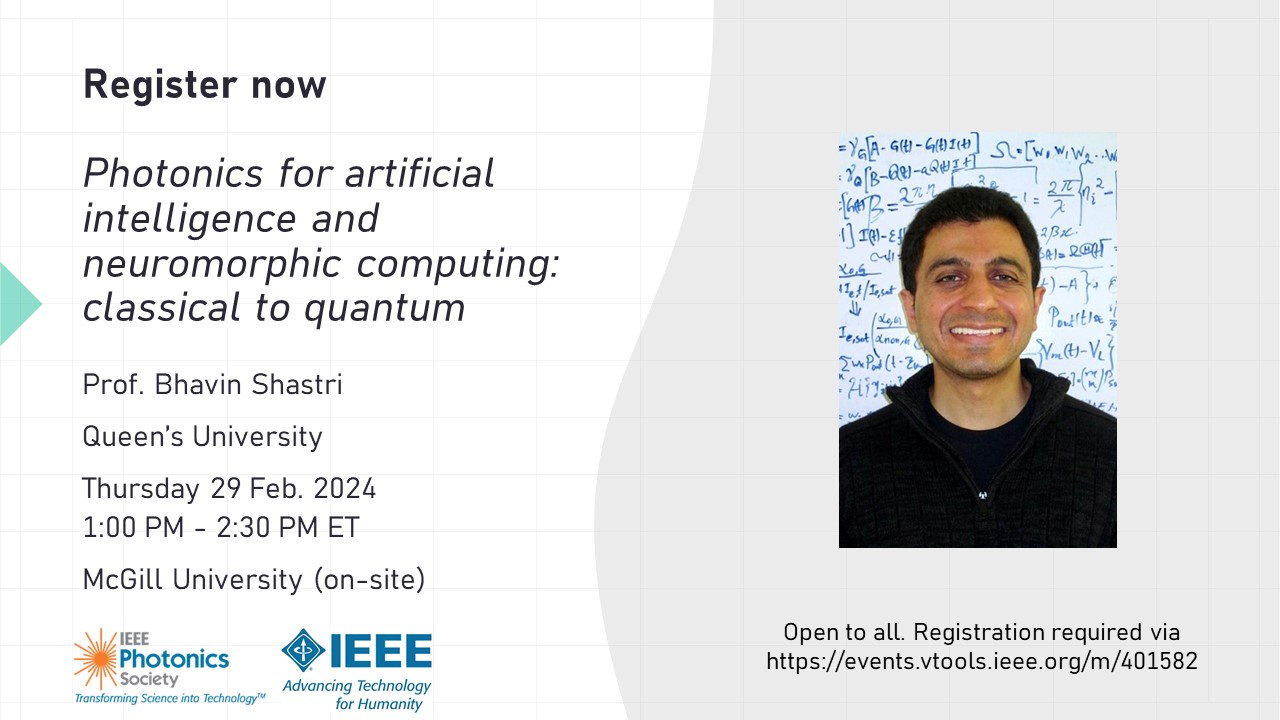Photonics for artificial intelligence and neuromorphic computing: classical to quantum

Abstract : Artificial intelligence (AI) powered by neural networks has enabled applications in many fields (medicine, finance, autonomous vehicles). Digital implementations of neural networks are limited in speed and energy efficiency. Neuromorphic photonics aims to build processors that use light and photonic device physics to mimic neurons and synapses in the brain for distributed and parallel processing while offering sub-nanosecond latencies and extending the domain of AI and neuromorphic computing applications. We will discuss photonic neural networks enabled by CMOS-compatible silicon photonics. We will highlight applications that require low latency and high bandwidth, including wideband radio-frequency signal processing, fiber-optic communications, and nonlinear programming (solving optimization problems). We will briefly introduce a quantum photonic neural network that can learn to act as near-perfect components of quantum technologies and discuss the role of weak nonlinearities.
Date and Time
Location
Hosts
Registration
-
 Add Event to Calendar
Add Event to Calendar
- Room MD 497, 4th floor
- 817 Sherbrooke St W,
- Montreal, Quebec
- Canada H3A 0C3
- Building: McConnell Engineering building,
Speakers
Prof. Bhavin Shastri of Queen's University
Photonics for artificial intelligence and neuromorphic computing: classical to quantum
Abstract : Artificial intelligence (AI) powered by neural networks has enabled applications in many fields (medicine, finance, autonomous vehicles). Digital implementations of neural networks are limited in speed and energy efficiency. Neuromorphic photonics aims to build processors that use light and photonic device physics to mimic neurons and synapses in the brain for distributed and parallel processing while offering sub-nanosecond latencies and extending the domain of AI and neuromorphic computing applications. We will discuss photonic neural networks enabled by CMOS-compatible silicon photonics. We will highlight applications that require low latency and high bandwidth, including wideband radio-frequency signal processing, fiber-optic communications, and nonlinear programming (solving optimization problems). We will briefly introduce a quantum photonic neural network that can learn to act as near-perfect components of quantum technologies and discuss the role of weak nonlinearities.
Biography:
Prof. Shastri is an Assistant Professor of Engineering Physics at Queen’s University and a Faculty Affiliate at Vector Institute. He received a Ph.D. degree in electrical engineering from McGill University in 2012 and was a Banting Postdoctoral Fellow at Princeton University. Dr. Shastri is the recipient of the 2022 SPIE Early Career Achievement Award and the 2020 IUPAP Young Scientist Prize in Optics "for his pioneering contributions to neuromorphic photonics.” He is a co-author of the book Neuromorphic Photonics, a term he coined with Prof. Prucnal. He is a Senior Member of Optica and IEEE.
Light refreshments and snacks will be provided

